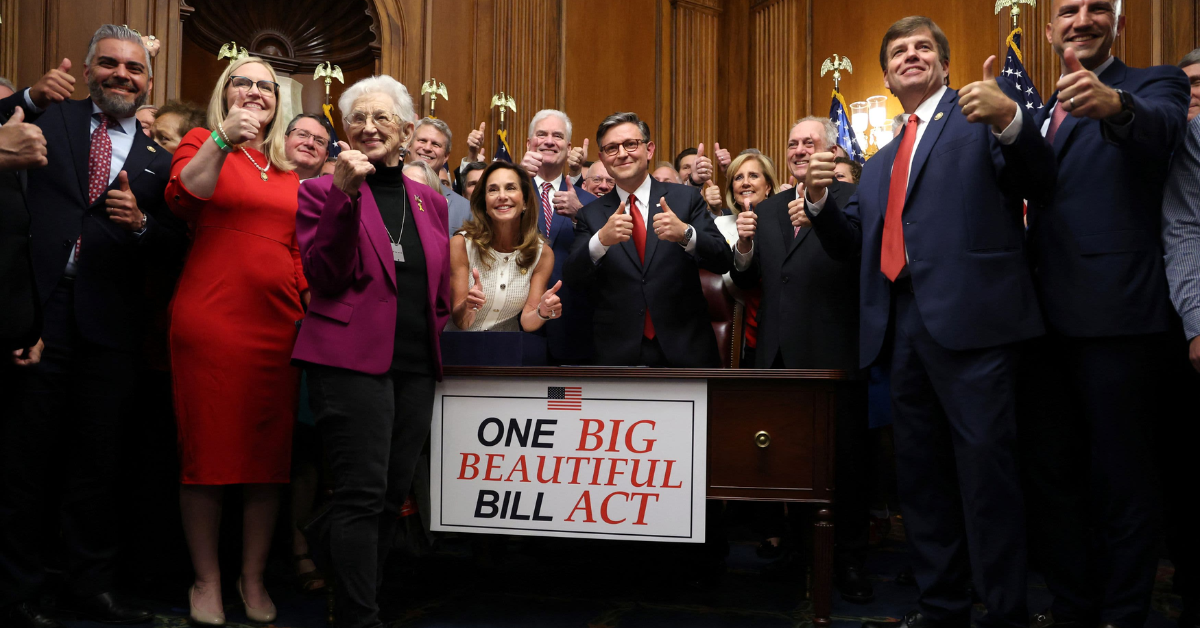As conversations about the future of Social Security escalate in Washington, proposals to “save” the program through risky financial maneuvers are resurfacing. However well-intentioned, these ideas may do more harm than good. America’s most successful and essential social insurance program needs a grounded, evidence-based fix — not high-stakes betting on Wall Street.
The Social Security trust funds are projected to face shortfalls starting in the early 2030s. According to the latest report from the Social Security Board of Trustees, if no action is taken, the program’s combined trust funds will be depleted by 2034, at which point it will only be able to pay 78% of benefits. While this projection is not new, it has prompted a host of policy suggestions, including a push to invest federal trust funds in the stock market — an idea that frequently resurfaces in political cycles.
The theory is simple: Invest part of the trust funds in equities, which over time tend to have a higher rate of return than government bonds, the current investment vehicle for trust funds. Proponents, such as former Senator Mitt Romney and several current lawmakers, argue that this would boost the program’s long-term solvency without raising taxes or reducing benefits.
But this is a gamble — and the stakes are high.
Risk Versus Reality
Social Security provides guaranteed income to more than 66 million Americans, including retirees, disabled individuals, and survivors of deceased workers . Its finances are based on predictable payroll tax revenues and conservative investments — a model that has lent the program dependability for nearly 90 years.
Switching to stock market investments could introduce volatility and uncertainty. While the market does often yield higher returns over time, it also experiences highs and lows that can potentially clash with the timing of benefit needs. For instance, had trust fund investments been heavily weighted in equities during the 2008 financial crisis or the early days of the COVID-19 pandemic, beneficiaries could have faced payment disruptions or cuts.
Critics also point out that shifting even a fraction of the Social Security portfolio into the stock market could influence financial markets due to sheer volume. With trillions of dollars potentially on the table, government investment could distort market dynamics or be subject to political influence — undermining investor confidence and destabilizing markets meant to absorb such funds.
Alternatives With Proven Impact
Retrofitting Social Security with speculative investment strategies is a distraction from real, proven solutions available through legislative policy. Economists and policymakers have long underscored a series of straightforward policy adjustments that can ensure the program’s solvency without endangering its core mission.
One proposal includes gradually increasing the payroll tax cap. Currently, only earnings up to $168,600 are subject to the Social Security payroll tax in 2024. Lifting or eliminating this cap could bring in significant new revenue.
Another measure would adjust the payroll tax rate incrementally. A modest increase of even 1% — phased in over time — could make a material difference in extending the trust fund’s solvency. According to the Congressional Budget Office (CBO), increasing both employer and employee payroll taxes by a combined 2.52 percentage points would close the shortfall entirely.
Additionally, modernizing how benefits are calculated — for instance, by adjusting the formula for high-income earners — while protecting lower- and middle-income beneficiaries can offer added fiscal relief. These are policy levers grounded not in speculation, but in math and actuarial science.
Public Confidence at Stake
The success of Social Security is fundamentally tied to public trust. Americans rely on it not only as a retirement safety net but also as an expression of national solidarity across generations. More than 90% of retirees rely on Social Security for some or most of their income, and for many, it represents their only steady financial support once they stop working.
Turning Social Security into a Wall Street player may erode that trust. Americans have witnessed firsthand how market downturns can devastate savings and pensions. Replicating that kind of risk in a foundational program could lead to widespread public concern — and political backlash.
Moreover, the financial history of privatization attempts in other countries serves as a cautionary tale. Chile, for example, introduced privatized pensions in the early 1980s, only to find decades later that many retirees were receiving inadequate benefits. The system was so unpopular it underwent significant reforms beginning in 2008 to restore faith in a public pension alternative.
Looking Ahead: A Call for Sensible Reform
Policymakers have a responsibility to safeguard Social Security with tools that reinforce — rather than undermine — its stability. That means relying on time-tested, bipartisan strategies and resisting the lure of “free money” offered by market speculation.
Tempting though it may be to chase higher returns through equities, doing so ties Social Security’s fate to an unpredictable financial system. At a time when income inequality is rising and economic vulnerability is a real concern for aging Americans, what the system needs most is a dependable, transparent, and accountable structure.
Congress has the power and the tools to deliver just that. Sound fiscal reforms rooted in evidence, equity, and long-term planning can do far more to preserve Social Security than any risky wager ever could. And as the 2034 deadline inches closer, the time to act responsibly is now.

